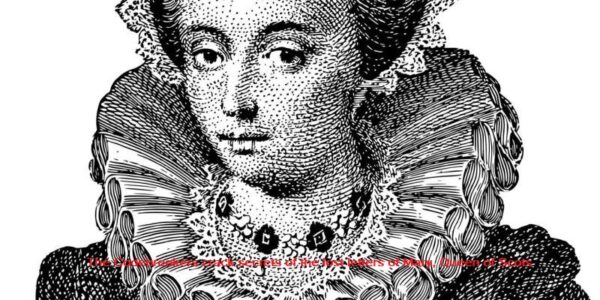The Codebreakers crack secrets of the lost letters of Mary, Queen of Scots
Secret, coded letters written by Mary, Queen of Scots, while she was imprisoned in England by her cousin, Queen Elizabeth I, have been uncovered by a multidisciplinary team of international codebreakers.
The contents of the letters were believed to have been lost for centuries. That is until George Lasry, a computer scientist and cryptographer, Norbert Biermann, a pianist and music professor, and Satoshi Tomokyo, a physicist and patent expert, stumbled upon them while searching France’s national library the Bibliotheque Nationale de France (BNF) Online archive for Encrypted documents.
Mary was only discovered by the author after the trio solved her sophisticated cipher system. Their decipherment of 57 letters, presented in the journal Cryptology, revealed about 50 new scripts previously unknown to historians.
These dates range from 1578 to 1584, 436 years before his beheading on this very day – February 8, 1587.
Mary’s letters reveal fascinating insights into her captivity. Most are addressed to Michel de Castelnau de Mauvisière, the French ambassador to England. He was a supporter of the Catholic Mary, who was in the custody of the Earl of Shrewsbury when he wrote them.
“After deciphering the letters, I was very, very confused and it felt kind of surreal,” said lead author Lasseri, who is also part of the multidisciplinary Decryption Project involving several universities in Europe, which aims to map, digitize, transcribe, and decipher historical ciphers. to decipher
We’ve cracked secret codes from kings and queens before, and they’re very interesting, but with Mary Queen of Scots, it was amazing because we deciphered so many unpublished letters and because she’s so famous. It’s a really exciting discovery.
He added, Together, the letters form a huge body of new primary material on Mary Stuart – some 50,000 words in total, shedding new light on her years of captivity in England.
Mary, Queen of Scots, left behind an extensive collection of letters held in various archives. However, there was earlier evidence that other letters of Mary Stuart were missing from those collections, as mentioned in other sources but not found elsewhere.
The letters we have read … are probably part of this lost secret correspondence.
One of the most famous historical figures of the 16th century, Mary succeeded her cousin Elizabeth as heir to the English throne.
Catholics considered Mary the legitimate sovereign, and Elizabeth imprisoned her for 19 years because she was seen as a threat. Mary was eventually executed at the age of 44 for taking part in a plot to kill Elizabeth.
While in captivity, Mary communicated with her allies and allies by employing messengers and making great efforts to maintain secrecy.
The existence of a secret communication channel between Mary and Castelnau is well-known to historians, and even to the English government of the time.
But Lasry and his fellow codebreakers provide new evidence that this exchange already existed as early as May 1578 and was active at least until mid-1584.
Using computerized and manual techniques, the study’s authors decoded the letters, revealing the challenges Mary faced in maintaining contact with the outside world, how the letters were carried, and by whom.
Key issues addressed in Mary’s correspondence include complaints about her poor health and prison conditions, and her negotiations with Queen Elizabeth I for her release, which she believes were not conducted in good faith.
Her distrust of Elizabeth’s spymaster, Sir Francis Walsingham, is also evident, as well as her animosity towards the Earl of Leicester and Elizabeth’s favorite, Robert Dudley. When her son James the future King James I of England was kidnapped in August 1582 she expressed her grief and her feelings of abandonment by France.
Writing in this special issue of Cryptology, Lassory and his co-authors describe how they first came across the letters. Some cipher a large set of unmarked documents and use the same set of graphical symbols.
The BnF catalog lists them from the first half of the 16th century and deals with Italian subjects. However, the study’s authors said they quickly realized after starting to crack the code that they were written in French and had nothing to do with Italy.
Their detective work often reveals verbs and adverbs in feminine forms, several references to captivity, and the name Walsingham, which raises suspicions that they may be Mary Queen of Scots.
This fact was confirmed by comparison with the plain text of the letter in the Walsingham papers in the British Library and by other means. A search for similar letters in the BnF collection uncovered 57 letters with the same cipher.
Commenting on the new paper, John Guy, an expert on Mary, Queen of Scots – who wrote a 2004 biography of Mary, Queen of Scots, which led to a major Hollywood film – said it was the most significant discovery about Mary for a century. .
This discovery is a literary and historical sensation; fantastic. It is the most important new discovery by Mary Queen of Scots for 100 years. I have always wondered if the originals of de Castelnau might one day be buried in the Bibliothèque Nationale d. France or perhaps elsewhere, Unknown because of ciphering. And now they have.
Lasseri and his co-authors also suggest that other deciphered letters of Mary that are known to exist may still be missing. A physical inspection of the documents, as well as online searches, are needed to uncover these, they add.
Hopefully, still, the study will lead to future research.
In our paper, we only provide a preliminary interpretation and summary of the letters. An in-depth analysis by historians may lead to a better understanding of the years of Mary’s captivity, adds Lasry. It would also be great to work with historians to produce an edited book of his deciphered, annotated, and translated letters.


 For all latest news, follow The carefulu Google News channel.
For all latest news, follow The carefulu Google News channel.





